42
1980s: IN THE NEWS

1980: Prinsendam burns and sinks
An engine room fire quickly spread on the 427-foot cruise ship Prinsendam in early October 1980. The crew called for help from the Gulf of Alaska on Oct. 5, and the U.S. Coast Guard, Air Force and several oil tankers from Valdez responded.
The rescuers found most of the 350 passengers and 200 crewmembers had evacuated to lifeboats by the time they arrived on the scene. But with time and fuel running out, helicopters picked people from the lifeboats and hoisted them on board the tankers. Some were taken to Valdez and some to Yakutat and then flown to Sitka.
All passengers and crew were rescued, and only a few had injuries. The Prinsendam burned and then sank in 9,000 feet of water while under tow to Sitka.
1980: ANILCA passed
Congress passed the Alaska National Interest Lands Conservation Act on Nov. 12, 1980, and President Jimmy Carter signed it into law on Dec. 2 that year. The act provided varying degrees of special protection to more than 150 million acres of land in Alaska, doubling the size of the country’s national park and refuge system and tripling the amount of land designated as wilderness, such as on Admiralty Island seen below.
Specifically, it provided more than 43 million acres of new national parklands, the addition of more than 53 million acres to the National Wildlife Refuge system and 25 wild and scenic rivers, with another 12 to be studied. It also created Misty Fjords and Admiralty Island national monuments in Southeast along with the Steese National Conservation Area and White Mountains National Recreation Area to be managed by the Bureau of Land Management. And it added more than 56 million acres to the Wilderness Preservation System and added more than 3 million acres to Tongass and Chugach national forests.
It was called the most significant land conservation measure in the history of the nation.
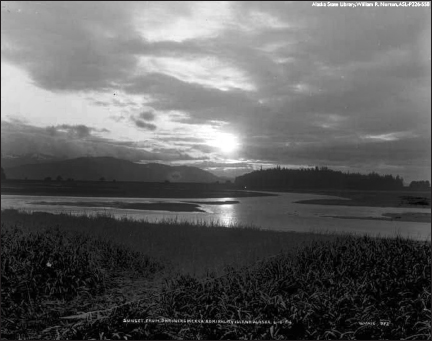
1980: Proposed PFD payment brings lawsuit
Alaska Legislators enacted the first Alaska Permanent Fund dividend that was made up of 10 percent of all state oil revenue. They also established rules to give a Permanent Fund dividend payment to every adult Alaska resident – $50 for every year of residency since 1959.
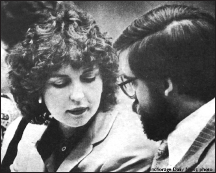
Payment to residents was put on hold, however, after Anchorage attorneys Ron and Patricia Zobel challenged the constitutionality of the program. The couple filed a lawsuit against the State of Alaska.
The Zobels were widely vilified in public and even received death threats during the next several years. Their case provided the first live coverage of a court proceeding in Alaska’s history.
1981: William Sheffied elected governor

Democrat William “Bill” Sheffield, seen here with his lieutenant governor, Stephen McAlpine, was elected Alaska’s governor in 1981. He served one term from 1982 until 1986.
1982: First PFD checks issued
The U.S. Supreme Court ruled in favor of the Zobels in 1982, saying prior legislation was unconstitutional. So the state Legislature passed a law authorizing equal dividend payments to all six-month residents.

The first Permanent Fund dividend checks were distributed on June 14, 1982, in the amount of $1,000 to all Alaskans who had resided in Alaska for six months. The Legislature paid it with surplus oil revenues, not with Permanent Fund income. The residency requirement for eligibility was changed to 12 months in 1990.
1982: Pope celebrates mass on Anchorage Park Strip
Alaskans packed the Delaney Park Strip to celebrate mass with Pope John Paul II on his visit to Anchorage Feb. 26, 1981. When he returned to Alaska three years later, he told the people that he remembered a little girl, Molly Marie Jordan of Palmer, who had welcomed him on his first trip to the Last Frontier with a bouquet of forget-me-nots and then died of cystic fibrosis 10 months after meeting him.
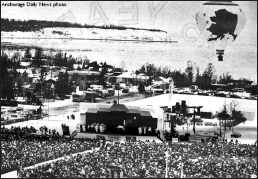
“Shortly afterward, that little girl was called home to her Heavenly Father. But her loving gesture is not forgotten and her memory is held in blessing.
“I found in what she did at the time a living truth about the people of the vast Alaskan territory – that in your thoughts and your prayers you remember the Pope.”
1983: Time zones changed
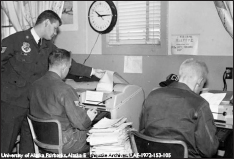
Time zones shifted to include all Alaska, except western-most Aleutian Islands, to one zone called Alaska Standard Time in 1983. It made most Alaska time one hour earlier than Pacific Standard Time, which helped businesses and the military communicate most of the day within and outside of the state.
1983: Crab season cancelled
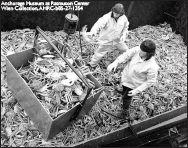
The once-abundant crab population, as seen in this photograph taken in Kodiak in the 1970s, became so low that most commercial seasons had to be cancelled in Alaska in 1983.
1984: Respected Native leader dies
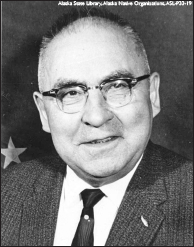
Alaska Native leader Frank Peratrovich died on Jan. 4, 1984, at the age of 88. He was one of the first Natives elected to the territorial Legislature, one of two Natives on the Alaska Statehood Committee and the only Native at the Constitutional Convention in 1955-56.
Peratrovich, who came from the small Tlingit community of Klawock in Southeast, was the second Native to become president of the Alaska Senate following statehood. He succeeded William Beltz of Nome.
“He didn’t talk very often, but when he did, he had something to say and everyone listened,” Anchorage photographer Steve McCutcheon later said. Peratrovich was a living historical bridge from the old ways to the modern times.
1984: Gov. William A. Egan dies
Alaska’s first elected sourdough governor, William A. Egan, died in Anchorage on May 6, 1984. Seen in this photograph giving a speech at the Anchorage Westward Hotel in the 1970s, Egan had been diagnosed with lung cancer the month before he died at age 69.

Many saw Egan, a Democrat, as a man who was frugal with state dollars, considered statewide interests, crusaded for airfields across bush Alaska and pushed for the state’s highway and ferry systems.
He set up the executive and judicial branches of government, created a state education department, encouraged offshore leasing and nurtured the fishing industry – all in his first terms as governor from 1959-1966. He was beat by Walter J. Hickel in 1966, but elected again in 1970. He then lost to Republican Jay Hammond by 287 votes in 1974.
1984: Alaska population booms
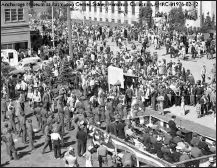
Alaska’s population reached 500,000 by its 25th Anniversary in 1984. More than 50,000 arrived the year before, and most of those new residents settled in Anchorage, as seen in this photo of a large crowd downtown. Although the Matanuska-Susitna Borough was listed as the fastest-growing area of Alaska with a 71 percent increase since 1980, according to the Alaska Department of Community and Regional Affairs.
1984: State looks at natural gas line

An estimated 26 trillion cubic feet of natural gas at Prudhoe, like that on the Kenai Peninsula seen here, and 5 trillion cubic feet at Kuparuk still awaited construction of a natural gas line to deliver it to market. Costs estimated at $43 billion to build the line in 1984 (compared to $8 billion that built the oil pipeline in the 1970s) kept the project on the back burner. That $43 billion in 1984 translates to about $98 billion in 2015 dollars.
1984: Alaska celebrates 25 years of statehood

Alaskans celebrated the state’s 25th anniversary throughout 1984, including at a banquet in the Wood Center at the University of Alaska Fairbanks that January. A wall-size reproduction of the stamp that commemorated the special year is shown at the head of the table.
1984: State buys Alaska Railroad

The state purchased the Alaska Railroad from the U.S. government for more than $22 million in 1984.
1984: Russians seize Homer ship
The five-man crew of the 115-foot Homer-based supply ship Frieda-K thought they were in American waters when they decided to take a side trip to Little Diomede Island to buy some souvenir T-shirts in September 1984, according to an article in the Anchorage Daily News. However, the crew of a Russian military ship thought they were in foreign waters and arrested them.
The Russian soldiers took the Homer seamen to an abandoned military barracks in the Siberian city of Provideniya. The Alaskans later said the communist soldiers ate their candy and smashed their emergency locator transmitter, but refused to accept the biblical literature the men tried to give them.
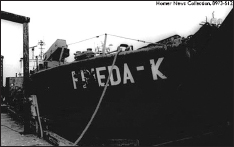
Eight days later, the Homer men were handed over to the U.S. Coast Guard by a Soviet warship in a mid-ocean rendezvous west of Nome. Released were Tabb and Tate Thoms, Mark Halpin, Charles Burrall and Tony Miller. Burrall later wrote a book about the ordeal titled “Captured By The Russians.”
1984: Plaque placed at Lincoln Memorial

Alaska and Hawaii finally joined the other 48 states on the Lincoln Memorial in Washington, D.C., in December 1984. The names were recognized in a 3-by-6-foot granite plaque inlaid into a stone landing on the stairs leading up to the memorial. The inscription explained that Alaska and Hawaii were not states when the memorial was completed in 1922, which is why their names and dates of admission to the union were not listed along the frieze that rings the memorial.